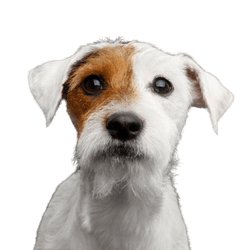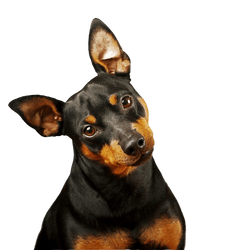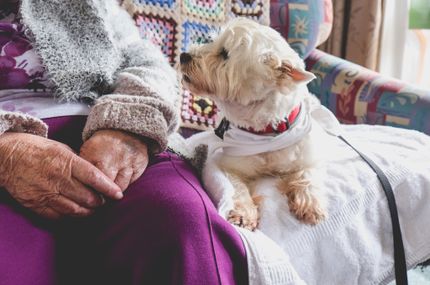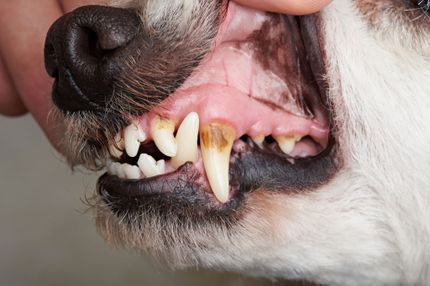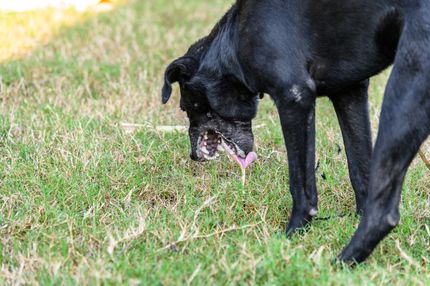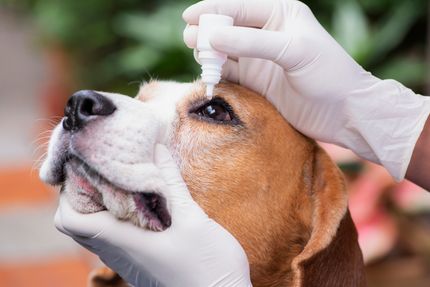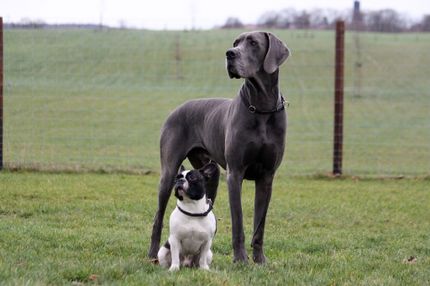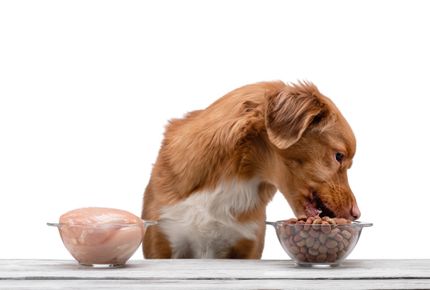Facts & Origin
History and origin of the Minnie Parson
The Minnie Parson, also known as the Parson Russell Terrier and Miniature Pinscher mix, is a hybrid dog and has its origin from the mixture of the two purebred dog breeds - the Parson Russell Terrier and the Miniature Pinscher. Both dog breeds have a long history. The Parson Russell Terrier was bred in England in the 19th century for fox hunting, while the Miniature Pinscher originated in Germany, where it was used as a chatter in stables.
Suitability of the Minnie Parson
The Minnie Parson inherits the best traits of both his parent breeds. He is energetic, intelligent and friendly. Thanks to its small size and lovable temperament, the Minnie Parson is suitable for a wide variety of lifestyles - from urban homes to large rural yards. Sturdy and alert, the Minnie Parson likes to take on the role of watchdog, making it well-suited for families looking for an attentive guard dog.
Because he is highly intelligent, he can be easily trained, and with proper socialization, he makes an excellent companion for children.
| Alternate Name | - |
| Origin | UK - Germany |
| Life expectancy | 12 - 15 years |
| Care requirements | low-maintenance |
| Activity level | average - average to high |
| FCI group | not recognised |
| AKC group | not recognised |
| KC group | not recognised |
More Parson Russell Terrier mixes
More Dwarf Pinscher mixes
Attitude, character and temperament of the breed
Possible character traits
The character traits of the Minnie Parsons combine the best of both breeds. These dogs are exceedingly intelligent, alert, and possess a strong hunting instinct that they inherit from the Parson Russell Terrier. They are also bold, lively, and proud - traits that clearly emerge from their Miniature Pinscher side. These are dogs that like to be on the move and need a lot of attention. They are also known for their affection and loyalty to their owner.
Minnie Parson Terriers are lovable creatures with a warm and friendly nature. They are known for their energy and playfulness, which makes them great companions for children. Their intelligence coupled with their eagerness to learn makes them easy to train. They love to attract attention and be the center of attention, which makes them great family dogs.
However, it should be noted that owning a Minnie Parson also requires a lot of commitment. Due to its high energy and intelligence, it needs constant encouragement both physically and mentally. Regular exercise and challenging training are therefore essential to keep him happy and healthy.
Usage
Care of the Minnie Parson
Since the Minnie Parson is a mix of the Parson Russell Terrier and Miniature Pinscher breeds, he requires grooming that takes into account elements of both breeds. His coat should be brushed regularly to remove dead hair and ensure a clean and shiny appearance. If the dog is outside a lot and is active, regular baths may be necessary. Teeth should be cleaned regularly and claws trimmed monthly to prevent health problems.
Health of the Minnie Parson
Like all dog breeds, the Minnie Parson can be subject to certain health risks. Parent breeds are prone to certain diseases, so regular health checks and a balanced diet are essential. Potential health problems can include hip dysplasia, eye problems, and heart disease. Therefore, a veterinarian should be consulted regularly to ensure the Minnie Parson's health.
Breeding the Minnie Parson
Breeding a Minnie Parson requires knowledge and understanding of the genetic traits and personality traits of both parent breeds. Because it is a crossbreed, the puppies may exhibit a wide range of physical and temperament traits. During breeding, it is important to ensure the health of the parent breeds and eliminate potentially harmful genetic conditions.
What does this mixed breed look like?
Do you want a small but spirited dog that will put a smile on your face day after day? Then the Minnie Parson is just the dog for you.
The Minnie Parson shines with its short, glossy coat that is a mix of the Parson Russell Terrier and Miniature Pinscher coat types. The color can vary, but most often they are found in shades of beige, brown and black.
| Fur length | short |
| Fur | rough-haired - flat coated |
| Ear shape | Triangle - Standing Ears |
| Tail | short - lang |
| Anatomy | strong, slim, sporty |
| Size ♀ | 25 - 35 cm |
| Weight ♀ | 4 - 8 kg |
| Size ♂ | 25 - 38 cm |
| Weight ♂ | 3 - 8 kg |
| Suitable For | Beginner, Children, Seniors, Children |
Known Diseases
Cataract
Cataracts are still one of the most common causes of blindness, even in dogs.
Progressive Retinal Atrophy (PRA)
Progressive retinal atrophy (PRA) is a slowly progressive death of the retina in dogs.
Ataxia
Ataxia (from Greek ἀταξία ataxia 'disorder' 'irregularity') is a generic term in medicine for various disorders of movement coordination. Ataxia can occur even when there is no paralysis (paresis), that is, when there is normal muscle strength.
Dislocations
Lenticular and patella luxation occur in some breeds and affect the eye.
Patellar luxation
Patellar luxation is the term used to describe a displacement of the kneecap, which is one of the most common causes of lameness in dogs.
Nervousness
Very often, unfortunately, small and thin breed suffering from permanent nervousness.
Permanent tremor
Persistent tremors can be very common in small breeds, and are often psychological.
FAQ
-
These mixed breeds are said to have an intelligent, energetic, studious and active personality. They are also extremely affectionate and playful and can get along well with children and other pets.
-
This hybrid breed often has a short, smooth and densely haired coat.
-
These mixed breeds are prone to respiratory problems, neurological problems, otitis externa, hip dysplasia, epilepsy and allergies.
-
This hybrid breed needs at least a lot of daily exercise and walks.
